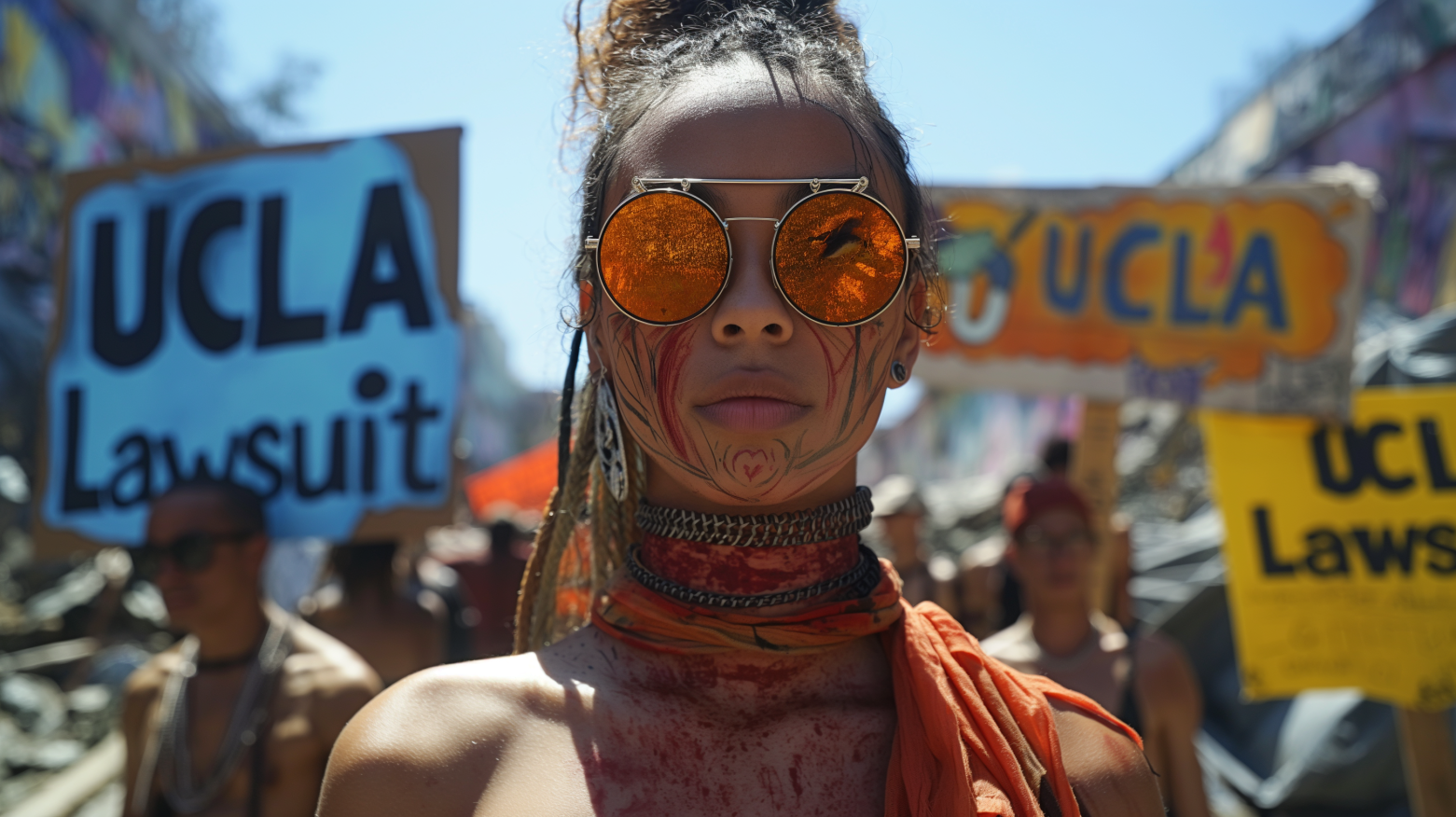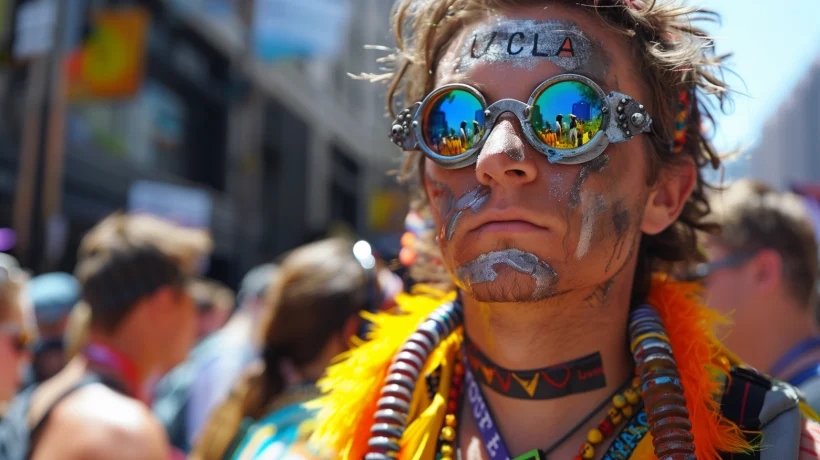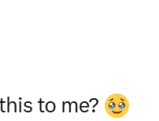
A new lawsuit by a UCLA student alleges significant discrimination and harassment on campus. This case brings to light critical issues of university accountability and student rights, potentially setting important precedents under California civil rights laws.
by LawInc Staff
June 5, 2024
A civil rights lawsuit filed by UCLA student Milagro Jones, against several professors and students is shining a spotlight on allegations of rampant discrimination, harassment and violence permitted against minority students on the prestigious campus.
This guide breaks down the key facts, legal issues and causes of action in the lawsuit, including alleged violations of California’s Bane Act (California Civil Code §52.1), Unruh Civil Rights Act (California Civil Code §51), and Ralph Civil Rights Act (California Civil Code §51.7).
Learn about the Spring 2024 incidents that spurred the suit, UCLA’s potential liability for enabling a hostile educational environment, and the individual defendants’ alleged roles in assault, false imprisonment, intimidation and more.
Whether you’re a concerned student, parent or interested observer, get an in-depth understanding of this high-stakes case and its broader implications for combating campus discrimination in the sections below.
1. Understand the Factual Allegations
-
- Encampment of Antisemitic Protesters: In Spring 2024, UCLA allegedly allowed a disruptive encampment of anti-Israel protesters to take over campus for weeks.
- Interference with Student Access & Safety: The encampment blocked paths, buildings and created a hostile environment, particularly for Jewish and “pro-Israel” students.
- Incidents Involving Plaintiff: The UCLA senior had several disturbing encounters with protesters who impeded his movement, surrounded and assaulted him.
- University & Faculty Involvement: UCLA allegedly enabled the protesters and several professors participated in the encampment and harassment of the student.
- Delayed & Inadequate Response: UCLA waited weeks to clear the encampment and has allegedly continued to allow a hostile environment even after the lawsuit.
Examples of Alleged Discrimination & Harassment:
-
- On 4/26/24, protesters denied plaintiff entry to the encampment that was blocking access to campus buildings. When he tried to enter anyway, they surrounded him, pushed him, pulled a blanket over him, and refused to let him leave for over an hour until he called police.
- On 4/29/24, plaintiff and his young daughter were again blocked from entering the encampment. Protesters interrogated his daughter and asked if she was “safe” with plaintiff.
- On 5/1/24, a protester smacked plaintiff’s phone from his hand while he tried to record their activities. Protesters threatened to shoot plaintiff and his brother and stole his phone. Plaintiff was physically restrained and forced to say “Free Palestine.”
- Plaintiff’s complaint includes photos of UCLA professors locking arms with protesters to block students A grad student wore a mask to conceal his identity while harassing plaintiff.
Implications of the Factual Allegations:
-
- The allegations, if proven, suggest a pattern of UCLA allowing discrimination, harassment, and intimidation against students based on their race, religion, and perceived political beliefs.
- Evidence that UCLA administrators knew of civil rights violations occurring but allowed the encampment and harassment to continue could demonstrate deliberate indifference and an official policy permitting the misconduct.
- Photos showing faculty members participating firsthand in the harassment and false imprisonment of plaintiff could make them personally liable for aiding and abetting civil rights violations.
- Plaintiff’s personal experiences over multiple days illustrate the severity of the alleged hostile environment, harassment, and potentially criminal acts he was subjected to, which he claims occurred with UCLA’s tacit consent.
- Continued encampments and disruptions even after plaintiff filed suit suggest an ongoing pattern of harassment that could bolster his claims for injunctive relief against UCLA to change its policies and practices.
FAQs:
-
- Are the lawsuit allegations proven facts? Not yet – they are still just accusations that will need to be substantiated with admissible evidence as the case proceeds. However, the complaint does reference compelling photo/video evidence.
- Can plaintiff bring civil rights claims if he wasn’t the protests’ intended target? Likely yes – the laws prohibit discrimination based on race and religion, even if he was just perceived as part of the targeted group. Plus he suffered personal harassment.
- What if UCLA argues it couldn’t control the protesters’ conduct? UCLA may argue that it took reasonable steps to manage the situation, but the lawsuit claims that the university enabled the encampment, failed to intervene, and that its own faculty and students participated.
- Could the individual defendants face criminal charges too? Possibly, for alleged acts like assault, battery, theft, criminal threats. But a high burden of proof applies for criminal cases.
- Will UCLA face consequences from the Dept. of Education? Maybe – federal anti-discrimination laws like Title VI could trigger a DOE investigation and penalties if UCLA is found to have permitted a racially hostile environment.
2. Analyze the Bane Act Claim
-
- Bane Act Prohibits Interference with Civil Rights: California Civil Code §52.1 bans threats, intimidation, or coercion that interferes with a person’s constitutional or statutory rights. The lawsuit claims that the defendants used threats and intimidation to prevent plaintiff from freely accessing the campus.
- Interference with Right to Attend School: Plaintiff claims UCLA and the protesters interfered with his right to access education free from discrimination and harm.
- Coercion Through Threats & Intimidation: The encampment and protest activities allegedly used intimidation to prevent plaintiff and others from freely moving about campus.
- UCLA’s Liability for Enabling Violations: Plaintiff contends UCLA had a duty to provide a safe environment for students but instead aided the protesters in creating a threatening educational environment.
- Damages & Penalties: Bane Act violations can yield actual damages, punitive damages, civil penalties, and attorney’s fees.
Applying the Law to Key Facts Alleged:
-
- The protesters’ conduct of physically blocking plaintiff on multiple occasions, pushing him, pulling a blanket over him and refusing to let him leave are coercive acts that interfered with his freedom of movement and right to access his education.
- UCLA’s failure to disperse the encampment despite knowledge it was impeding student access and UCLA’s tolerance of the protesters’ intimidation tactics could make it liable for enabling threats and coercion that violated plaintiff’s rights.
- Alleged statements by protesters that they would shoot plaintiff and his brother, forcing plaintiff to say “Free Palestine,” and following and videotaping plaintiff to deter him from filing complaints constitute threats and intimidation.
- By clearing protesters only after violence broke out and moving classes online, UCLA may have ratified an environment of threats interfering with plaintiff’s right to safely attend school.
- Acts like forcefully restraining plaintiff and smacking his phone are independent crimes that satisfy the Bane Act’s requirement of threats, intimidation or coercion.
Keys to Proving a Bane Act Violation:
-
- Establishing that the protesters and involved UCLA representatives used threats, intimidation or coercion to try to prevent plaintiff from freely exercising his legal rights.
- Showing plaintiff had a clearly established constitutional or statutory right that was interfered with, such as the right to access education free of racial discrimination and harassment under federal and state civil rights laws.
- Demonstrating that UCLA had actual or constructive knowledge of the civil rights violations occurring but failed to take reasonable steps to address the threats and coercion.
- Introducing strong evidence like photos, videos, and witness testimony to illustrate the severity of the harassment, UCLA’s dismissive response, and the concrete harms to plaintiff.
- Arguing for enhanced remedies like punitive damages and civil penalties to punish and deter UCLA’s alleged deliberate indifference to student civil rights.
FAQs:
-
- What specific rights are protected by the Bane Act? It broadly prohibits interference with rights secured by the U.S. or California Constitutions or federal/state laws. For students this can include equal access to education free of discrimination.
- Is UCLA immune from Bane Act liability as a public university? No, state entities like UC schools are subject to the Act’s civil penalties. They can also be liable for damages if an official policy/custom caused the violations.
- Can plaintiff pursue a Bane Act claim against the protesters too? Yes, the Act allows lawsuits against private individuals in addition to organizations and government entities that interfere with civil rights.
- How does plaintiff prove UCLA had an official policy allowing the violations? Evidence that UCLA had authority to control the encampment but refused to act and that high-level UCLA representatives participated could show an unwritten policy.
- What damages can plaintiff recover under the Bane Act? Actual damages, treble/triple damages if constitutional rights were violated by threats/intimidation/coercion, minimum statutory damages of $4000, punitive damages, and attorney’s fees.
3. Evaluate the Unruh Act Claim
-
- Unruh Act’s Anti-Discrimination Mandate: California Civil Code §51 prohibits discrimination by any business establishment based on protected traits like race, religion, etc.
- Businesses Can’t Deny Equal Access: Under the Act, UCLA can’t withhold or provide unequal advantages, privileges, and services compared to other students.
- Intentional Discrimination Not Required: Plaintiff doesn’t have to prove UCLA intended to discriminate against him due to his race or pro-Israel views.
- Business Practice With Discriminatory Effect Suffices: An Unruh claim can arise from any UCLA practice or policy that has the effect of discriminating against a protected group.
- Statutory Damages & Attorney’s Fees: Prevailing plaintiffs can get a minimum of $4000 per violation, up to three times actual damages, and mandatory attorney fees.
Connecting the Alleged Facts to the Unruh Act:
-
- UCLA, though a public university, likely qualifies as a “business establishment” subject to the Unruh Act when providing educational services to students .
- By allowing protesters to block buildings and pathways, UCLA denied plaintiff and other students equal, non-discriminatory access to its facilities and educational opportunities.
- The protesters’ anti-Israel views and targeting of perceived Jewish/pro-Israel students suggests their actions were motivated by discrimination against those protected groups.
- UCLA’s alleged unwritten policy of enabling the encampment and harassment had the effect of discriminating against plaintiff as an African American and perceived pro-Israel “agitator.”
- Even if UCLA argues it didn’t intend to single out plaintiff, its practices created an environment where he was subjected to unequal treatment due to his race and assumed beliefs.
Strategies to Prove an Unruh Act Violation:
-
- Argue UCLA is a business establishment providing educational services subject to the Act, even if also a government entity. Cite cases applying the Act to UC schools.
- Show UCLA had authority to regulate time, place and manner of campus speech/protests but chose not to despite clear discriminatory impact on plaintiff and others.
- Demonstrate how UCLA’s policies and practices in handling the encampment and complaints had the effect (intentional or not) of enabling discriminatory and unequal treatment of plaintiff.
- Illustrate severity and pervasiveness of hostile anti-African American and anti-Jewish/Israel environment permitted by UCLA with concrete examples of threats, slurs, and harassment.
- Establish that protesters’ conduct went far beyond political disagreement into targeted discrimination by interfering with plaintiff’s ability to access the same educational services as others.
FAQs:
-
- Is a public university like UCLA really a “business establishment?” The application of the Unruh Act to public universities is complex and debated. While some courts have extended the Unruh Act to certain non-traditional business entities, its application to public universities like UCLA is not universally accepted and remains a contested legal issue.
- Does plaintiff have to prove UCLA intentionally discriminated against him? No, the Unruh Act applies to unintentional discrimination and business practices that are neutral on their face but have a discriminatory impact.
- What if UCLA had policies forbidding discrimination that just weren’t followed? Having an official anti-discrimination policy isn’t enough – UCLA’s actual practices and handling of the situation are what matter under the Act.
- How can plaintiff show he wasn’t just offended by the political views expressed? He must demonstrate that the protesters engaged in severe, pervasive harassment that interfered with his educational access based on protected traits like race or perceived religion.
- What damages are available for Unruh Act violations? Actual damages suffered, treble (triple) damages in cases of extreme conduct, minimum statutory penalty of $4000 per violation, and attorney’s fees and costs.
4. Consider the Ralph Act Claim
-
- Ralph Act Targets Hate Crimes: California Civil Code §51.7 provides a civil cause of action for acts of violence or intimidation based on protected characteristics.
- Defendants Must Commit or Threaten Violence: More than just discrimination, defendants must engage in violent acts or credible threats with a discriminatory motive. The lawsuit claims that the defendants threatened or committed acts of violence against plaintiff due to his race and perceived support for Israel.
- Actual Knowledge of Threat Required: UCLA can only be liable if it had actual knowledge of the violence/threats and failed to take action to stop it.
- Targeting Based on Race/Religion: Plaintiff must show the perpetrators targeted him due to his race or perceived Jewish/pro-Israel views.
- Statutory Damages, Fees & Penalties: Victims can recover actual damages or statutory damages of $25,000, civil penalty of $25,000, and attorney’s fees.
Pointing to Evidence of Ralph Act Violations:
-
- The protester who smacked plaintiff’s phone, threatened to shoot him, and stole his phone while physically restraining him committed acts/threats of violence.
- Protesters physically surrounding plaintiff, pushing him, and refusing to let him leave could constitute false imprisonment – a criminal act satisfying the violence requirement.
- UCLA administrators and police were informed of plaintiff being physically assaulted and trapped but failed to intervene, showing actual knowledge.
- Protesters’ anti-Israel slurs, forcing plaintiff to say “Free Palestine,” and assuming he was a “Zionist” suggest he was targeted for perceived Jewish/pro-Israel views based on his race.
- UCLA’s dismissive response to complaints of vandalism and violence could be seen as ratifying or encouraging continued threats against plaintiff and others.
Proving Ralph Act Liability Against UCLA & Perpetrators:
-
- Argue the protesters’ conduct went beyond political speech into criminal acts/threats intended to intimidate plaintiff, thus meeting the Ralph Act’s violence requirement.
- Show that anti-African American and anti-Semitic slurs, along with language assuming plaintiff’s race made him an “agitator,” demonstrate he was targeted based on protected traits.
- Establish that plaintiff, other students, and even UCPD notified UCLA of the assaults and threats, but UCLA failed to take reasonable steps to prevent further incidents.
- Cite individual incidents of violence like the physical assault, theft, and false imprisonment of plaintiff to argue for separate $25,000 statutory damages awards for each.
- Seek a $25,000 civil penalty and attorney fees against UCLA and individual perpetrators to punish the alleged hate crimes and deter future incidents.
FAQs:
-
- What’s the difference between the Unruh Act and Ralph Act? The Unruh Act targets discriminatory business practices generally, while the Ralph Act focuses specifically on hate-motivated acts/threats of violence.
- Can plaintiff sue under the Ralph Act even if no criminal charges were filed? Yes, the Ralph Act provides an independent civil cause of action regardless of whether the conduct was criminally prosecuted.
- Does UCLA have to condone the violence or threats to be liable? No, all that’s required is that UCLA had actual knowledge of the wrongful acts and failed to take reasonable steps to stop them.
- What if UCLA claims the protesters were just expressing political views? The line is crossed when political disagreement escalates into criminal acts, violence or threats intended to intimidate others and interfere with their rights.
- How can plaintiff show the perpetrators had racist or anti-Semitic intent? Slurs, hate language, and assumptions about his views/identity based on his race can circumstantially demonstrate discriminatory intent.
5. Explore Additional Causes of Action
In addition to the statutory civil rights claims, plaintiff’s lawsuit includes several other causes of action arising from UCLA and the individual defendants’ alleged acts and omissions, such as:
-
-
- Negligence: UCLA breached its duty to provide a reasonably safe campus environment by allowing a known dangerous condition to persist.
- Breach of Contract: By permitting severe harassment, UCLA failed to uphold its implied contractual obligation to provide educational services in a safe and non-discriminatory manner.
- Assault & Battery: Protesters’ acts of smacking plaintiff’s phone, pushing him, restraining him, and threatening violence constitute civil assault and battery.
- Intentional Infliction Emotional Distress: Defendants’ outrageous conduct of enabling and engaging in harassment foreseeably caused plaintiff severe emotional distress.
- False Imprisonment: The false imprisonment claim involves unlawfully restraining plaintiff’s freedom of movement, detailing instances where protesters surrounded and prevented him from leaving the encampment.
- Declaratory/Injunctive Relief: Plaintiff seeks a court order declaring UCLA’s policies/practices unlawful and compelling policy changes to prevent future incidents.
-
Potential Angles to Bolster These Claims:
-
- Emphasize UCLA’s non-delegable duty to maintain a safe premises and provide educational services in a non-discriminatory manner, which can’t be avoided by pointing fingers at protesters.
- Cite UCLA’s policies guaranteeing students freedom from discrimination and promising a safe learning environment to establish a contractual obligation.
- Focus on the severity, offensiveness and harmful intent of the unwanted physical contacts protesters made with plaintiff to satisfy assault/battery elements.
- Detail the emotional and psychological toll the harassment and intimidation has taken on plaintiff through lay and expert witness testimony.
- Argue that continued encampments and disturbances since the lawsuit show UCLA hasn’t adequately remedied the hostile environment, justifying judicial intervention.
Tactics to Defeat Defenses to These Claims:
-
- If UCLA argues it took reasonable steps by eventually removing encampment, show the weeks of delay and continued harassment thereafter made that too little, too late.
- Challenge any claims that the harassment wasn’t severe or threatening enough to breach UCLA’s duties by emphasizing the criminal nature of the acts and restrictions on plaintiff’s movement.
- Stress that even if UCLA didn’t directly authorize the individual perpetrators’ acts, it ratified the harassment culture by knowingly tolerating it without consequences.
- Use experts in campus security and discrimination to testify how UCLA’s policies and practices fell short of reasonableness and enabled a hostile environment.
- Argue that the pattern of harassment before and after the lawsuit shows UCLA’s deliberate indifference, justifying punitive damages and injunctive relief.
FAQs:
-
- Can plaintiff bring a negligence claim even if UCLA didn’t intend to cause harm? Yes, negligence only requires showing UCLA failed to act reasonably, not that it had ill intent. Knowingly allowing a dangerous condition can suffice.
- What damages are available for the assault and battery claims? Plaintiff can seek compensatory damages for physical injuries, medical bills, pain and suffering, and punitive damages if the conduct was particularly egregious.
- Does UCLA have immunity from these common law tort claims? Government tort claims immunity is complex, but generally doesn’t apply when a public entity maintains a dangerous condition it has notice of.
- How can plaintiff show his distress was severe enough? Testimony from treating mental health providers, friends/family, and experts on the impacts of trauma and discrimination can help prove serious distress.
- What types of policy changes might plaintiff seek through an injunction? He could request court-ordered reforms to UCLA’s procedures for responding to discrimination complaints, monitoring protests, and disciplining harassers.
Summary

Plaintiff’s suit against UCLA has far-reaching implications for how colleges must respond to campus discrimination, harassment and violence. While lawsuits against protesters for violating an individual’s rights are not uncommon, the allegations here paint a troubling picture of UCLA administrators and faculty enabling and even participating in the misconduct.
The lawsuit against UCLA and several professors and students contains disturbing accusations of unchecked harassment, intimidation and even violence permitted against minority students on the prestigious campus. The complaint details multiple instances of protesters physically assaulting plaintiff, blocking his movement around campus, and threatening him with racist slurs and violence, all with the apparent consent of the university.
Plaintiff seeks to hold UCLA accountable under several California civil rights statutes prohibiting discrimination and hate crimes, including the Unruh Civil Rights Act, Bane Act, and Ralph Act. To prevail, he’ll need to show that UCLA’s policies and practices of tolerating the protesters created a hostile educational environment where he was denied equal rights and subjected to threats, coercion and violence based on his race and perceived political views.
The complaint also includes common law tort claims for negligence, breach of contract, assault, battery, and emotional distress against UCLA and the individual protesters. However, the civil rights claims are the heart of the case and carry the potential for enhanced statutory penalties, punitive damages, and injunctive relief.
UCLA will likely argue that it did take some steps to remove the encampment and can’t control the bad acts of individual protesters. But the complaint alleges that the university had full knowledge of the ongoing harassment for weeks and that several UCLA employees actively participated, suggesting an unwritten policy of permitting the hostilities.
If successful, plaintiff’s case could have significant financial consequences for UCLA and result in court-ordered policy reforms. But more than that, it may establish important precedent regarding the duties and potential liabilities of universities that fail to adequately respond to severe and pervasive harassment, discrimination and threats against minority students on their watch. Colleges nationwide should follow this case closely, as it could expand legal risks for institutions that knowingly tolerate hateful conduct impacting student safety and campus climate.
At the same time, while Milagro Jones’ allegations are serious, the lawsuit should not be used to stifle legitimate, peaceful student protests and political speech. Courts will have to balance UCLA’s obligations to protect students from racially-motivated mistreatment with its duties to uphold free speech rights. Where exactly that line gets drawn is sure to be hotly contested.
Ultimately, this case underscores the importance of universities addressing campus discrimination and harassment effectively. It highlights the need for proactive measures to ensure a safe and inclusive educational environment. It remains to be seen whether UCLA will defend its actions or reach an early settlement, but either way, the issues raised by this lawsuit are sure to resonate across academia.
Concerned About Campus Discrimination? Know Your Rights
If you or someone you know has experienced harassment, threats, or discrimination at a university based on race, ethnicity, religion, gender, sexual orientation or other protected characteristics, you have legal options. In addition to reporting through the school’s internal complaint procedures, you may have civil rights claims you can assert in court.
Many laws at the federal and state level prohibit discrimination in educational programs and activities, including Title VI of the Civil Rights Act, Title IX, the Americans with Disabilities Act, Section 504 of the Rehabilitation Act, state civil rights statutes, and more. Universities that receive federal funds can face administrative penalties and sanctions for violating these laws.
Lawsuits against colleges for mishandling discrimination and harassment have risen sharply in recent years, resulting in campuses paying out major damages. If you’ve been mistreated, retaliated against, or denied an equal educational experience based on a protected trait, don’t stay silent.
-
Disclaimer
This article discussing the lawsuit filed by the student against UCLA and several other defendants is for general educational and informational purposes only. It does not constitute legal advice and does not create an attorney-client relationship.
The discussion of the various civil rights statutes and legal claims is based on the allegations of the complaint, which have not yet been proven in court. Application of the laws and viability of the claims may change as more facts emerge.
If you have specific questions about campus discrimination and harassment or believe your educational rights have been violated, please contact an attorney licensed in your state for a personalized case evaluation. Every situation is unique, and a qualified lawyer can help assess your options and advise you on how to proceed.
While every effort was made to ensure the accuracy and thoroughness of this article, it is not a substitute for independent legal research and competent counsel regarding your particular circumstances. Laws and legal precedent are subject to change, and the strategies that might apply to plaintiff’s case might not be appropriate for any other lawsuit.Individuals should not take or refrain from taking any action based on this article’s contents alone. The author and publisher disclaim any liability for losses or damages that may result from reliance on this article. When in doubt, seek guidance from a knowledgeable attorney to protect your rights and interests.
Related Articles
When Protest Photos Go Viral: How to Protect Your Reputation and Business










